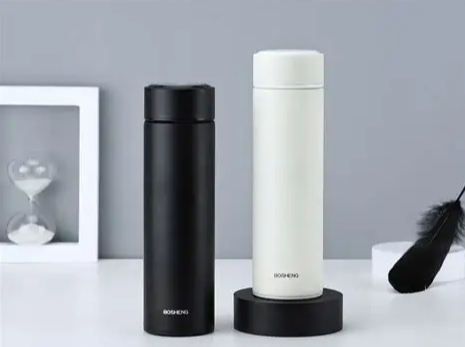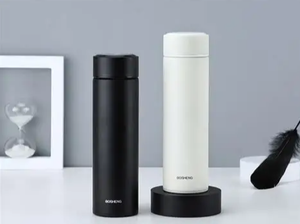
Inspection process for insulated cups - Factory inspection and certification service
As an essential item for daily drinking water, the insulation performance and usage safety of a thermos cup directly affect the user experience of consumers. To ensure that the thermos cup products meet industry standards and quality certification requirements, establishing a professional inspection process is of vital importance. This article will systematically introduce the inspection standards, testing methods and certification requirements of thermos cups, providing a complete quality control guideline for enterprises.
I. Core Performance Testing and Certification Standards
1. Thermal Insulation Efficiency Certification
Thermal insulation efficiency is the core quality indicator of insulation cups, directly reflecting the technical level and quality grade of the product.
2. Capacity Accuracy Certification
Both the positive and negative deviations of capacity must be strictly controlled.
Under the same conditions, capacity is positively correlated with the requirement for temperature maintenance.
Establish a capacity tolerance certification standard
3. Sealing Safety Certification
After being filled with hot water, there is no leakage at all.
The inner and outer parts of the cup are completely sealed together.
Zero tolerance for leakage testing
4. Impact Resistance Certification
A key indicator for evaluating the product's service life
Testing the shock absorption performance of the accessory materials
Ensure there is no gap between the bottle body and the outer shell.
Prevent defects such as displacement of the asbestos pad and tail cracks.
5. Certification of Standardization of Markings
The product name, capacity, and diameter markings are accurate.
The manufacturer's name and address information is complete.
The execution standard number is clearly indicated.
The user manual and precautions are all complete.
II. On-site Inspection and Certification Methods
1. Thermal Insulation Performance Test Certification
Vacuum Degree Determination Method:
After pouring in boiling water, let it stand and observe.
The lower part of the cup maintains a cool sensation.
The lid part is slightly hot (non-vacuum area)
The temperature difference is clearly within the normal vacuum range.
2. Structural Process Certification
Inspection of Integral Molding Process:
There are no seams from the cup body to the bottom of the cup.
The service life can last for more than 8 years.
Better durability than welding techniques
Welding process identification:
There are obvious seams.
The vacuum treatment effect is poor.
There is a tendency for air leakage to occur.
3. Weight Authenticity Certification
Common Misconceptions Correction:
Weight and mass do not have a direct proportional relationship.
Overweight products may be equipped with unnecessary accessories.
If there is a sense of foreign matter when shaking, be vigilant.
The vacuum cup has a moderate and uniform weight.
III. Inspection and Certification Process Standards
1. Sampling Inspection Plan
Implement batch sampling in accordance with the GB/T standards
The insulation performance item will undergo stricter inspection.
Establish a complete quality traceability record
2. Test environment requirements
The test should be conducted under standard room temperature conditions.
Use calibrated temperature measurement equipment
Strictly standardize the testing methods and time
3. Defect Level Determination
Serious Defect: Leakage, no insulation effect - zero tolerance
Main defect: Insulation time fails to meet the strict standards.
Minor defect: The appearance flaws fall within the acceptable range as per the standards.
IV. Key Control Matters for Factory Audit
To ensure that the quality of the insulated cups continues to meet the certification requirements, during the factory audit process, the following matters need to be given special attention:
Production process control: Key procedures of vacuum technology and welding techniques
Material quality certification: Certificate of food-grade stainless steel material
Calibration of detection equipment: The insulation performance testing equipment is calibrated regularly.
Environmental Management: Requirements for Clean Production Facilities
Personnel qualification certification: Professional technical personnel training and assessment
V. Practical Guide for Quality Certification
1. Brand Selection Suggestions
Brands usually offer higher product quality guarantees.
The cost-effectiveness is an important consideration factor.
Choose the appropriate product based on actual needs.
2. On-site rapid inspection method
Observe the integrity of the cup body manufacturing process
Test the rationality of the weight
Check the standardization of labels
Simple insulation effect test
3. Continuous Quality Monitoring
Establish a regular evaluation system for suppliers
Carry out batch inspection and certification
Improve the quality feedback mechanism
Inspection and Certification Summary
The inspection and factory verification of insulated cups is a highly technical and systematic project. It requires comprehensive testing and certification of the insulation performance, structural process, and usage safety. By establishing a professional inspection process and strict quality standards, enterprises can ensure that the insulated cup products meet the industry certification requirements, providing consumers with safe, durable, and highly effective insulated products.
分享这个商品

Inspection process for insulated cups - Factory inspection and certifi
As an essential item for daily drinking water, the insulation performance and usage safety of the thermos flask directly affect the user experience of consumers
